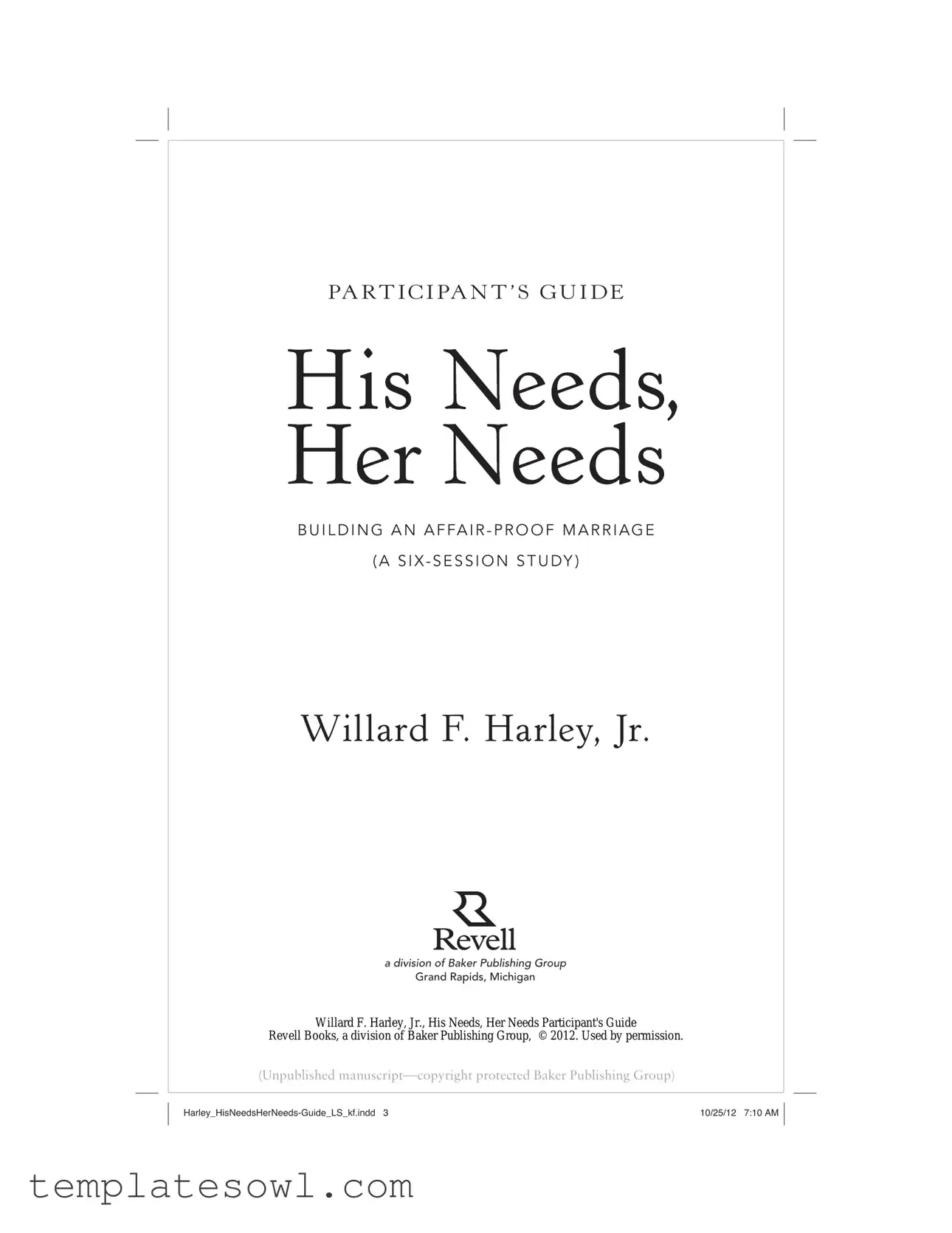Filling out the His Needs Her Needs form can be a crucial step in understanding and nurturing a marriage. However, many individuals make common mistakes that may hinder the effectiveness of this process. Here are ten mistakes to watch for while completing the form.
First and foremost, people often overlook the importance of honesty. When participants don't provide truthful answers, they miss out on opportunities for growth. The form aims to facilitate open communication, and avoiding honesty can lead to misunderstandings later. Genuine responses create a solid foundation for discussions.
Next, some individuals fail to consider their partner's perspective. By focusing solely on their own needs, they risk neglecting what their spouse truly values. The form requires a balanced view. It’s essential to think about how both partners contribute to the relationship, ensuring that both sets of needs are addressed.
A third mistake comes from skipping the reflection process. Some rush through the form, not taking the time to contemplate their feelings and experiences. This can lead to superficial answers, which do not provide meaningful insights into the marriage. A few moments of reflection can result in richer discussions later.
Another common error involves vague answers. When participants use broad terms instead of specific examples, the results become less actionable. Clear and concrete responses create a better picture of needs and wants. It's more helpful to elaborate on feelings and provide scenarios that clarify what matters most.
Additionally, people sometimes confuse wants with needs. The worksheet is designed to identify true emotional needs, not mere desires. Differentiating between the two is crucial. Recognizing this distinction can lead to more impactful and fulfilling conversations about what each partner requires for emotional fulfillment.
A lack of prioritization is another mistake. Some individuals list needs without considering which are most important. The focus should be on identifying the top priorities, allowing couples to address the most significant needs first. Without prioritizing, discussions can become overwhelming or unfocused.
Another issue often arises from not discussing the form together after completion. Individuals may fill it out independently but neglect to sit down with their spouse to compare and discuss responses. This shared dialogue is where real understanding can develop—without it, the form loses much of its value.
It's also important to avoid making assumptions about what the partner needs. Relying on previous experiences or stereotypes can lead to incorrect conclusions. Instead, open and honest dialogue about each other’s needs is essential. This helps to clear up any misconceptions that might exist.
Lastly, some people view the form as a one-time exercise rather than a starting point for ongoing discussions. Marriage is a dynamic relationship that requires continuous effort. Revisiting the needs forms regularly ensures that both partners remain attuned to each other’s evolving emotional needs.
Being mindful of these common pitfalls can help partners make the most out of the His Needs Her Needs form. Embracing honesty, perspective-sharing, and ongoing dialogue fosters a deeper connection that can lead to a more satisfying and successful marriage.







 Revell Books, a division of Baker Publishing Group, © 2012. Used by permission.
Revell Books, a division of Baker Publishing Group, © 2012. Used by permission.



 Step 1: Watch the videos and learn from Dr. Harley and his wife, Joyce.
Step 1: Watch the videos and learn from Dr. Harley and his wife, Joyce. Step 2: Engage in small group discussion.
Step 2: Engage in small group discussion. Step 3: Work on this individually.
Step 3: Work on this individually.

 Step 4: Work on this together.
Step 4: Work on this together.